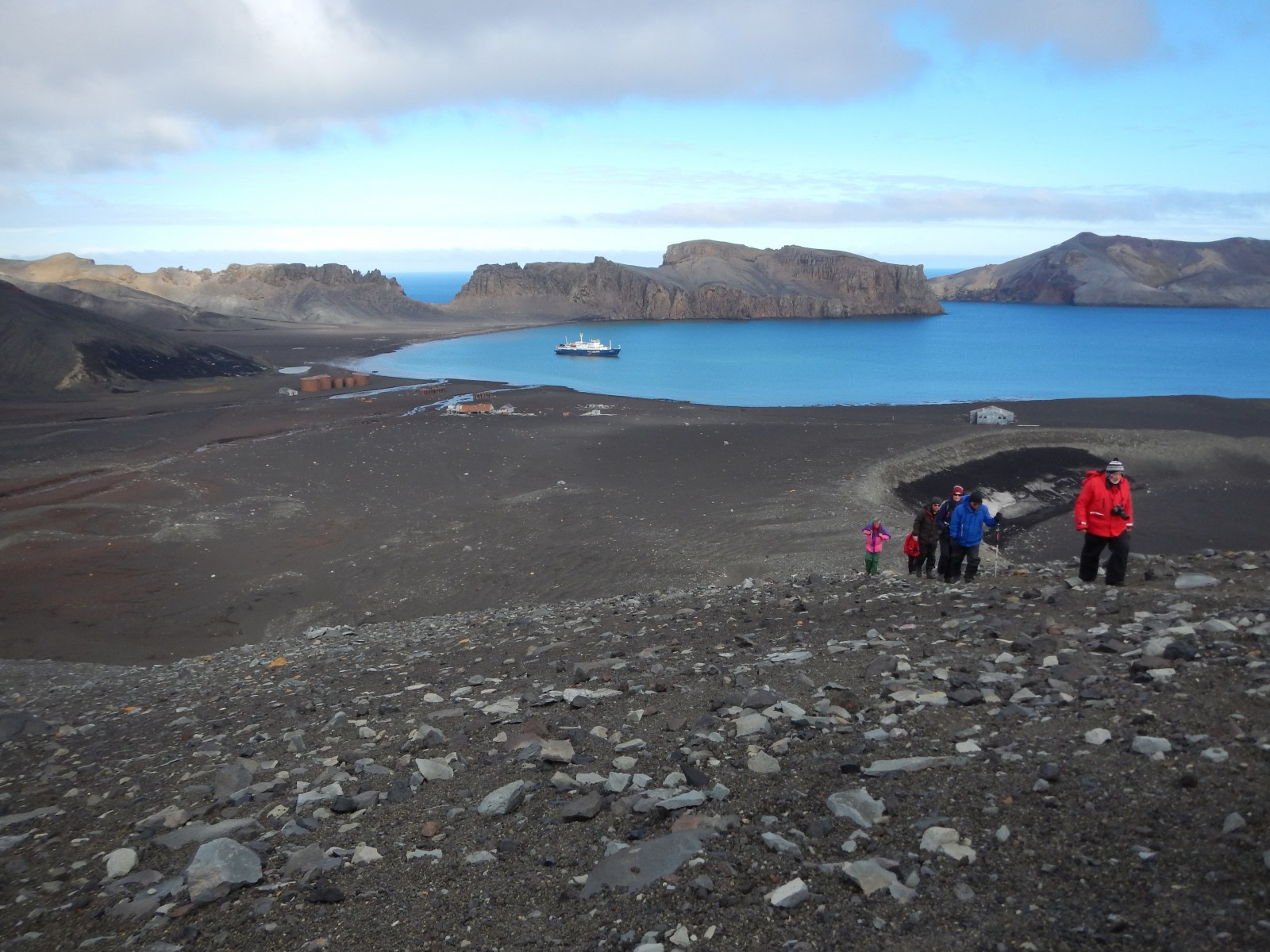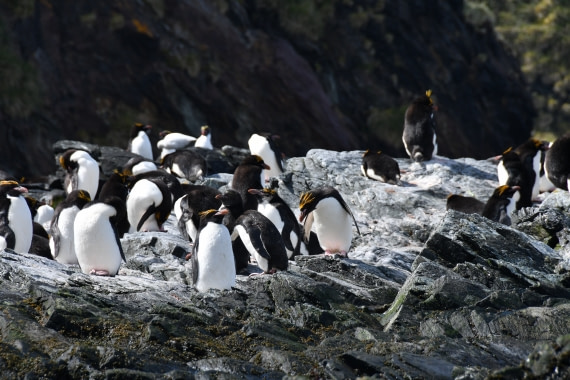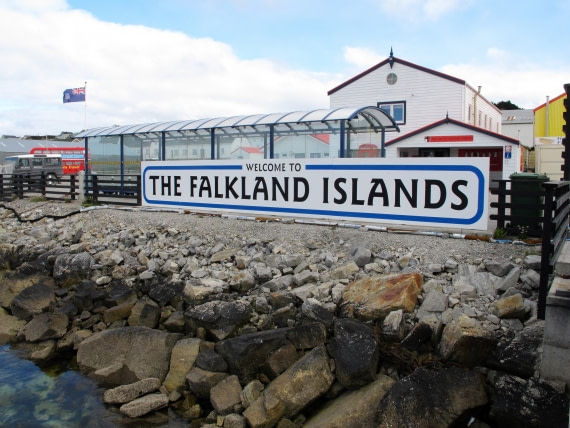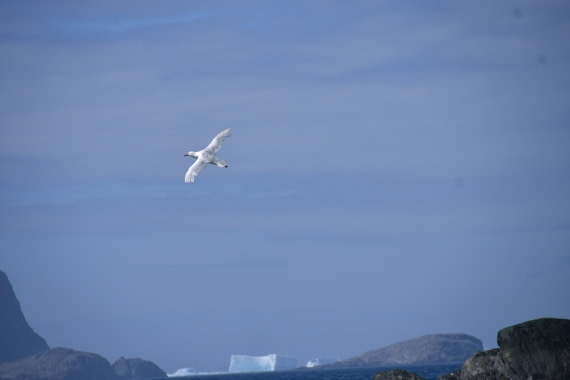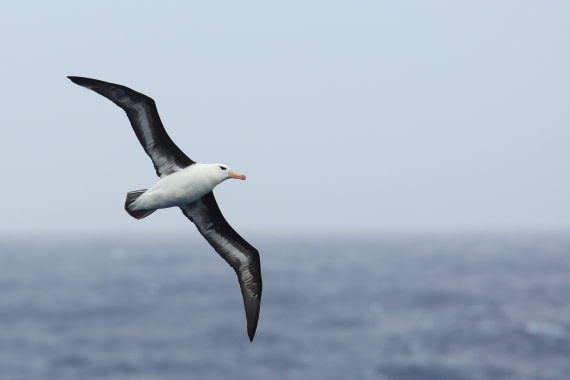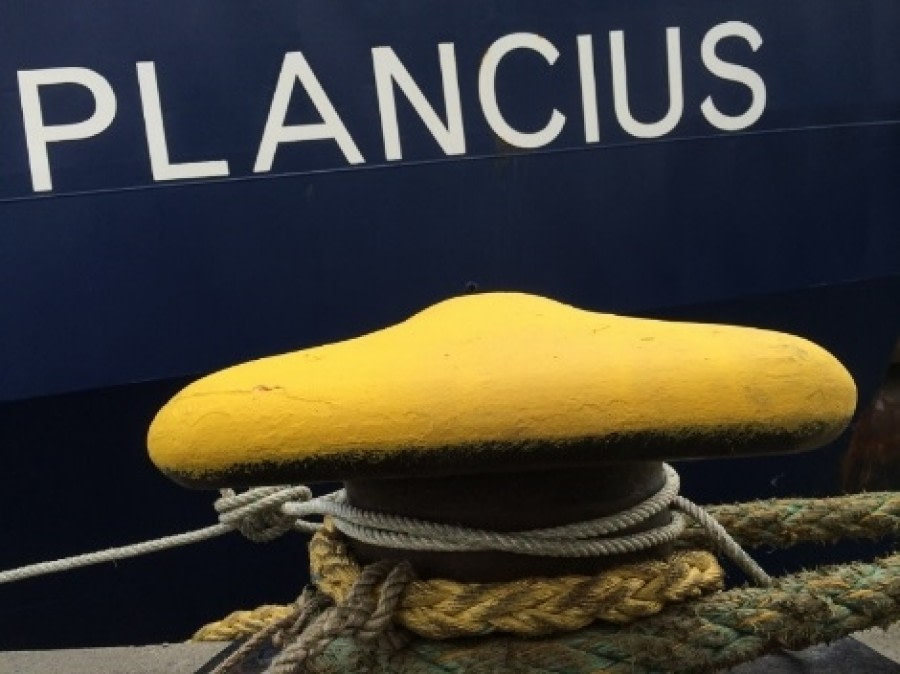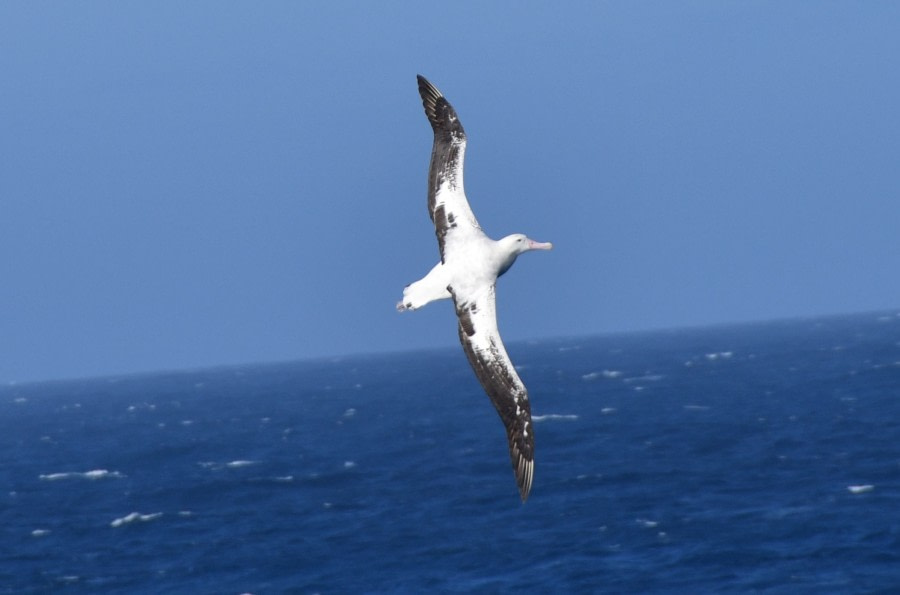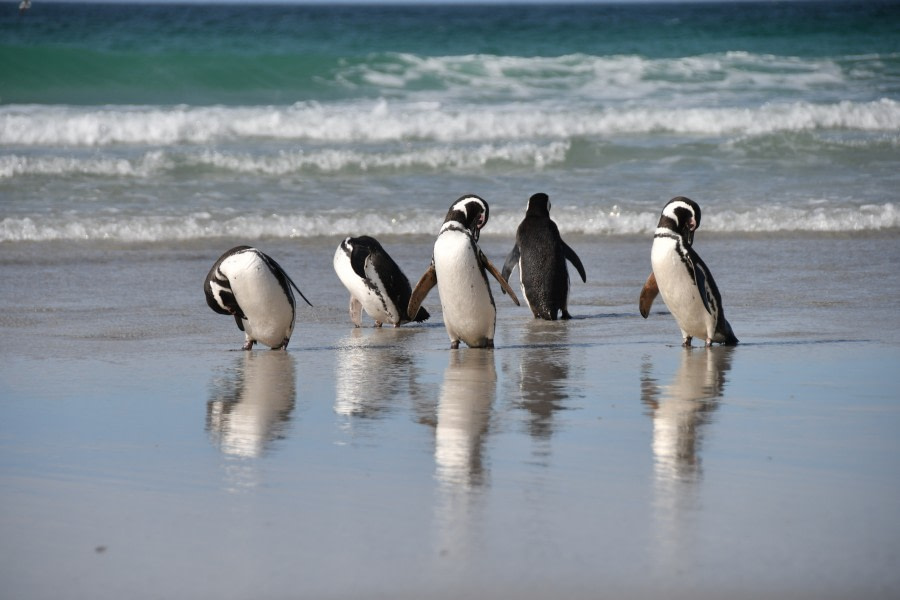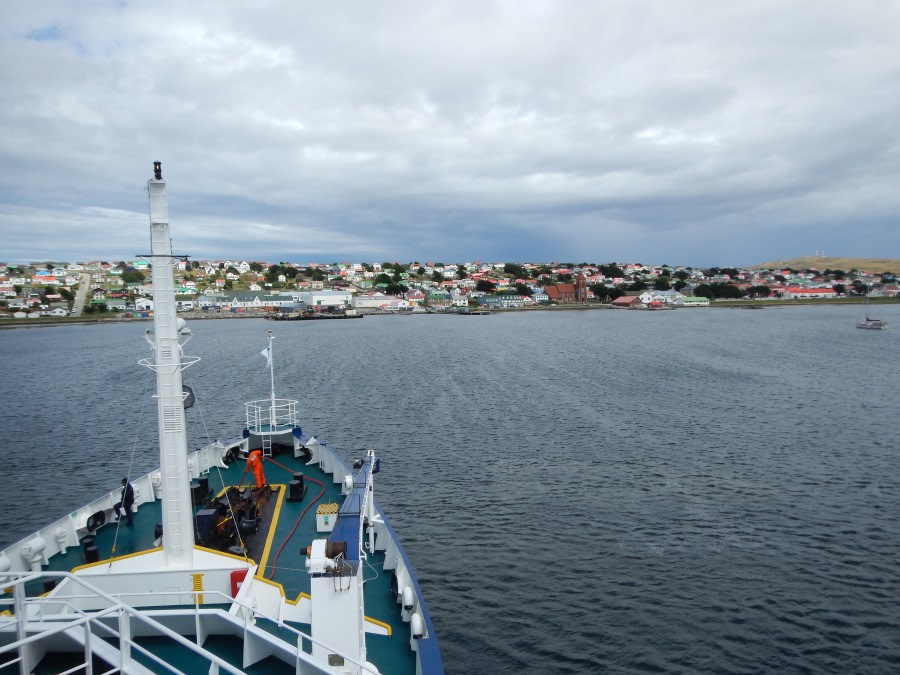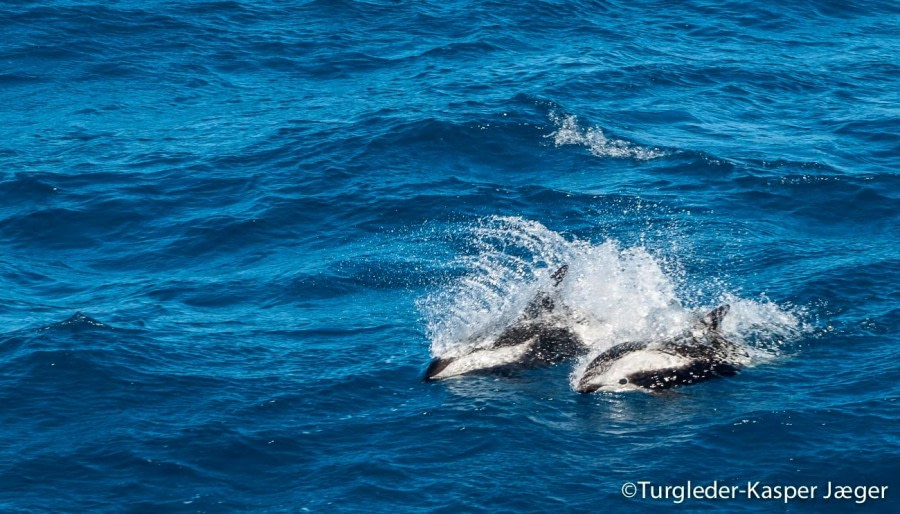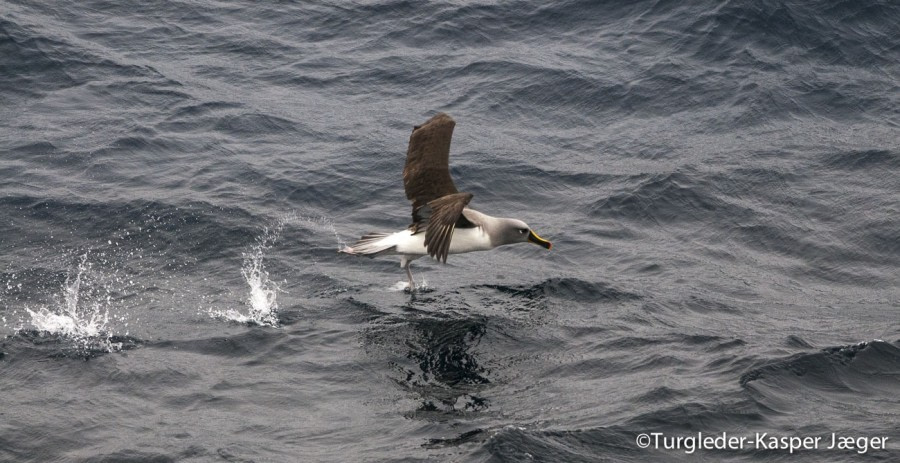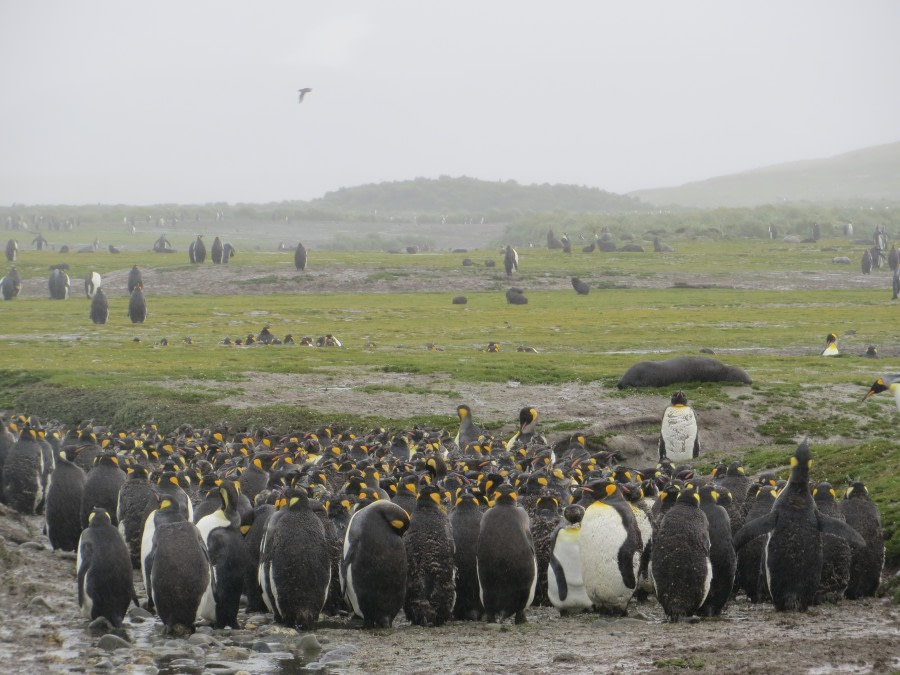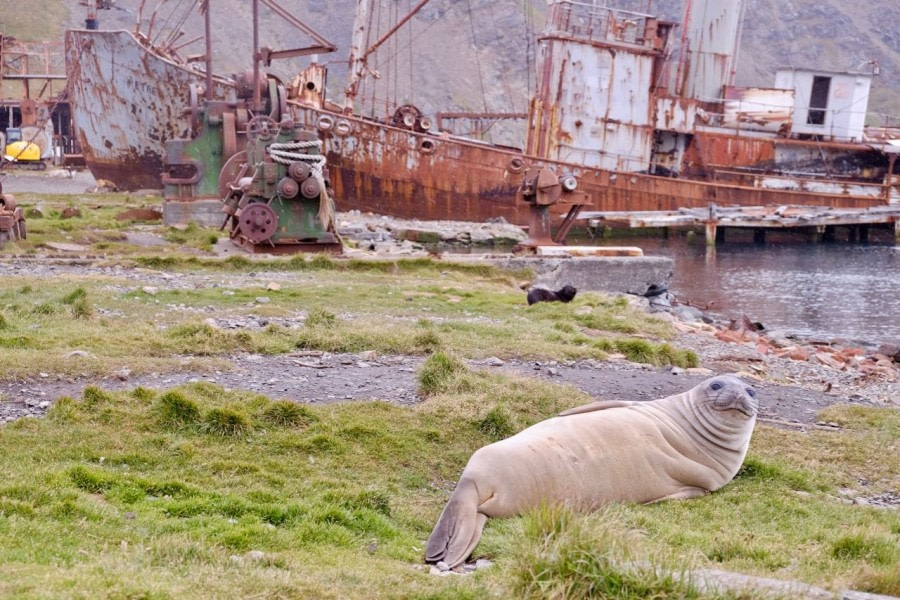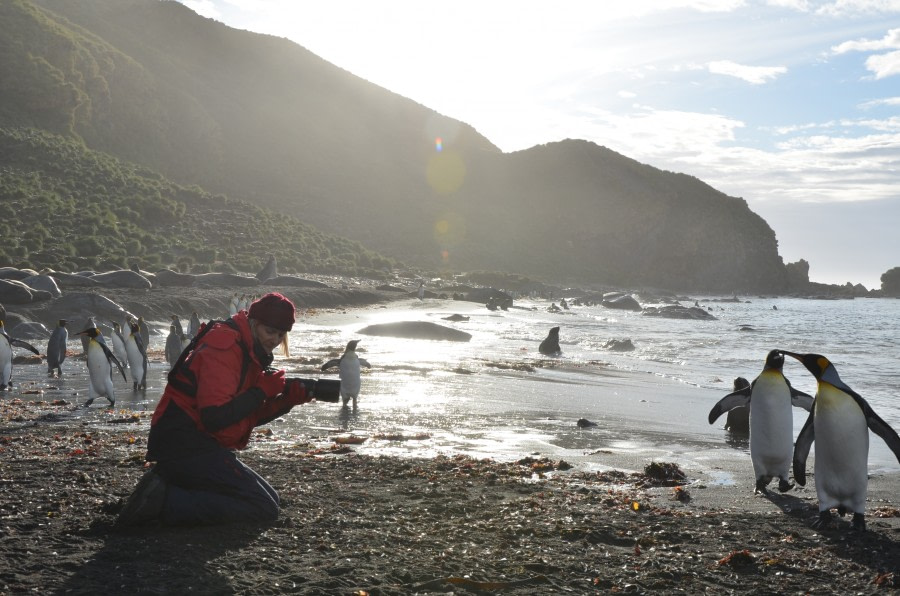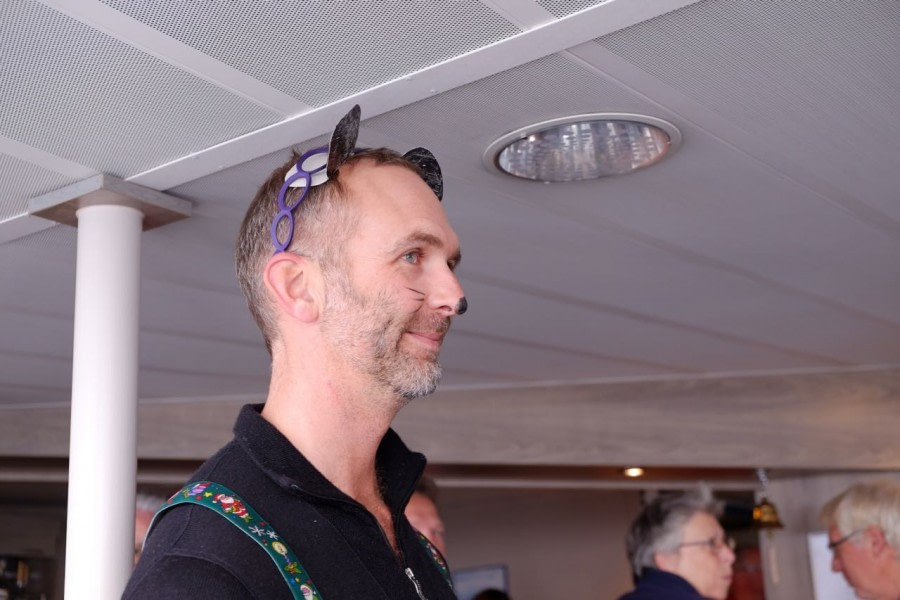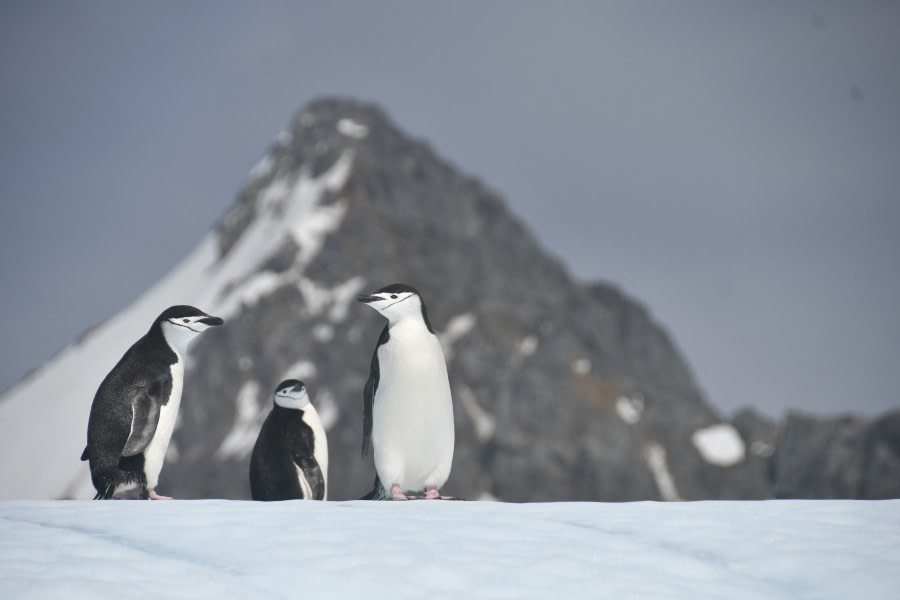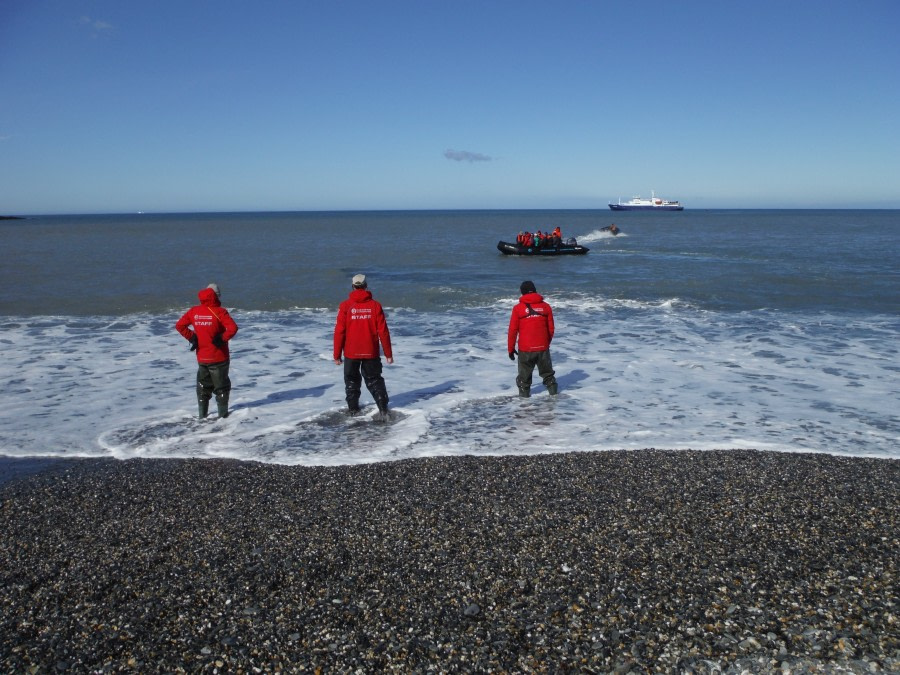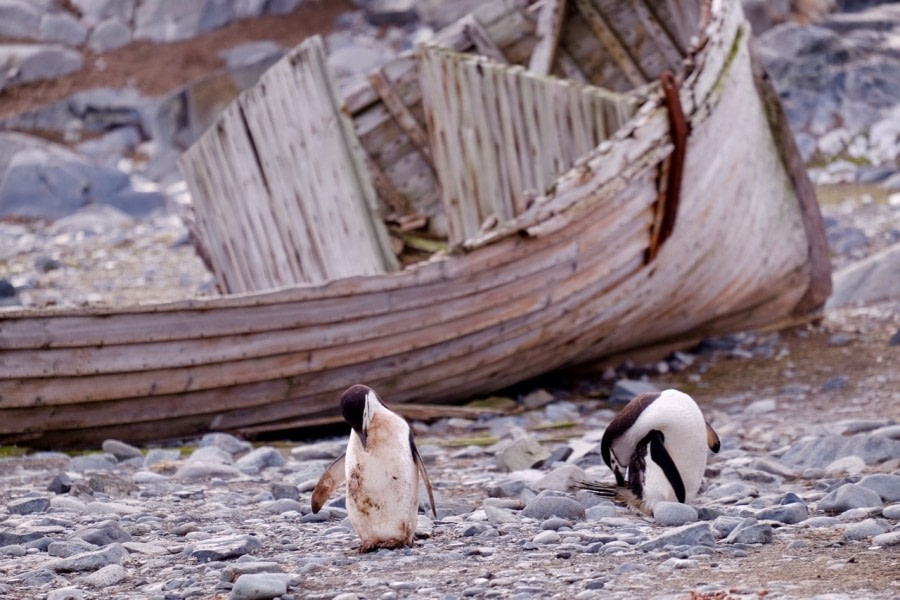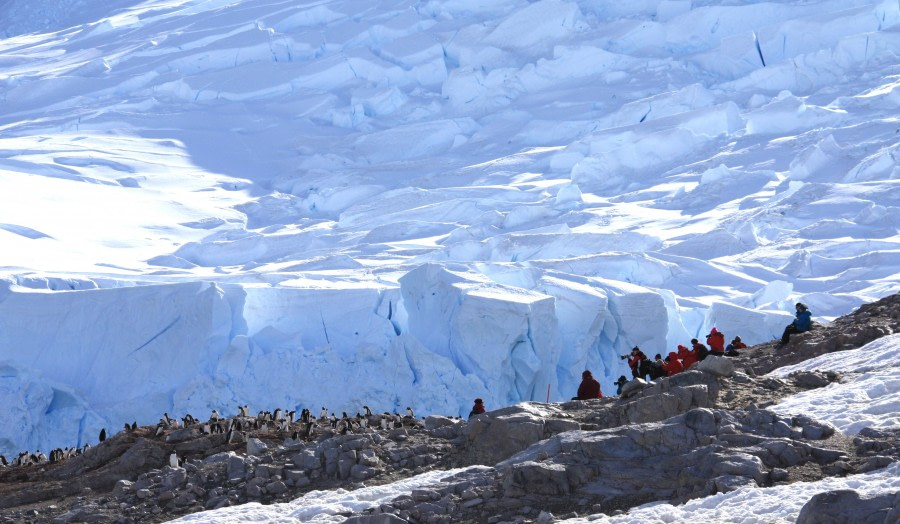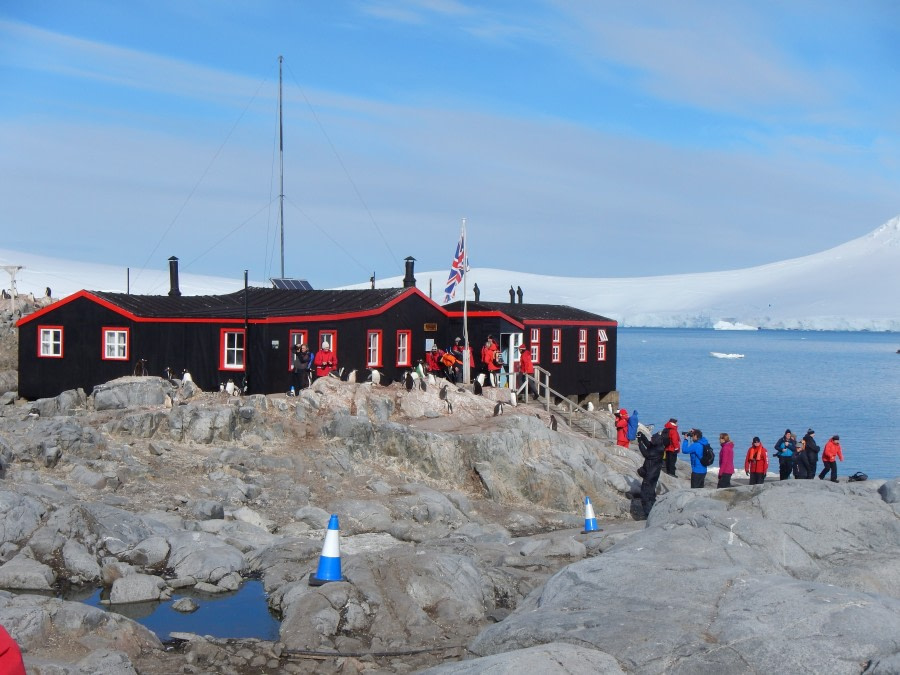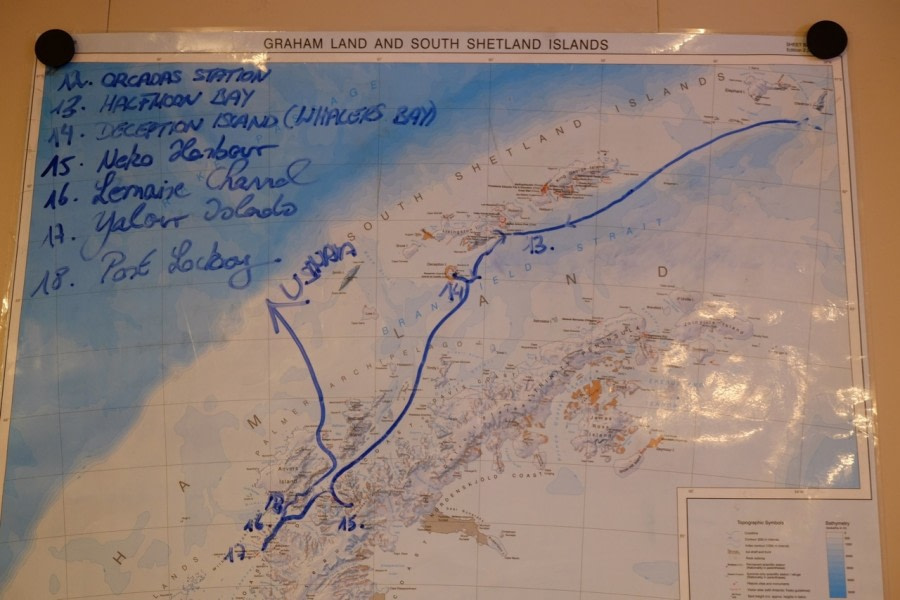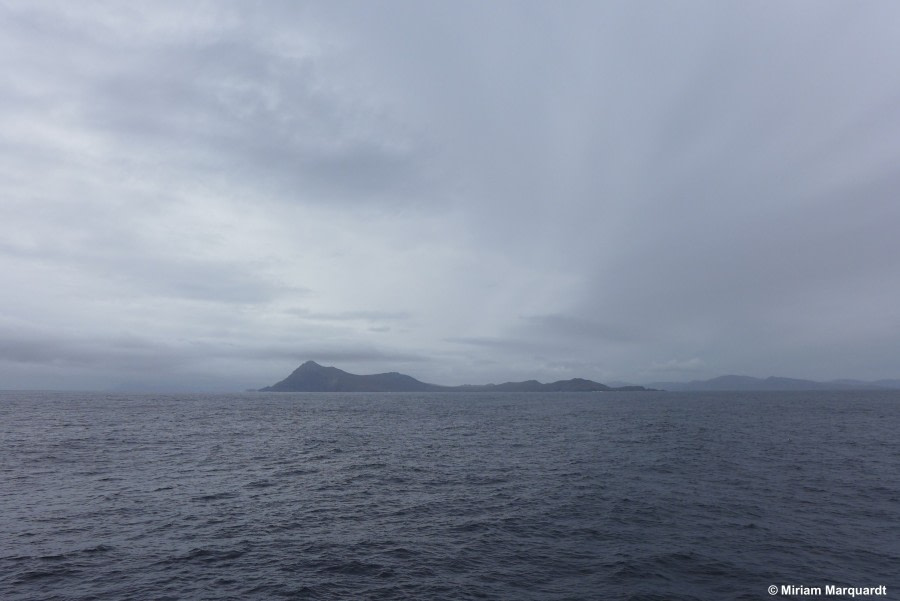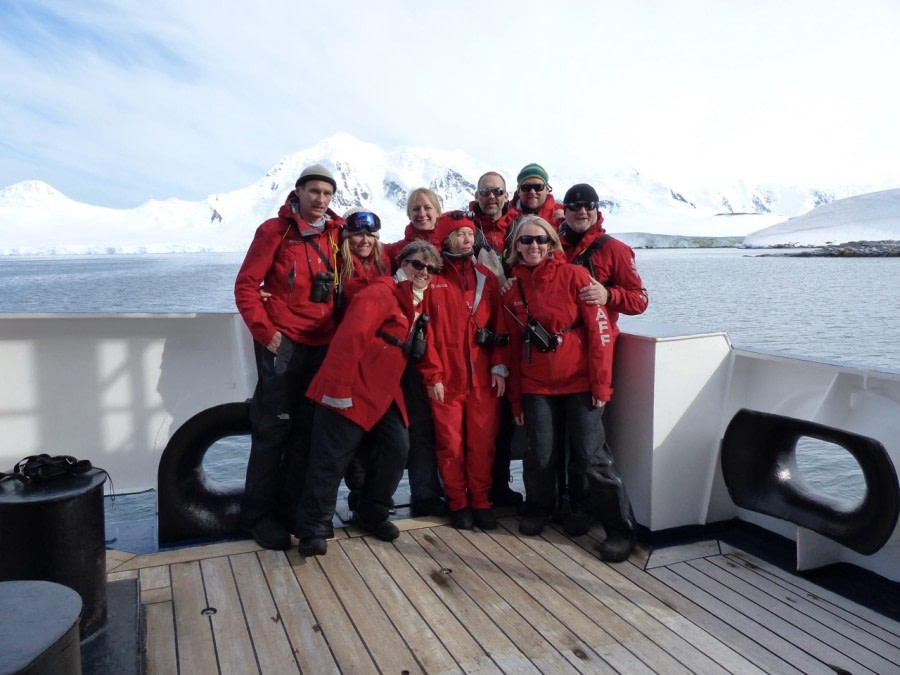| Date: | 18.01.2017 |
| Position: | 42°45’S / 065°01’W |
| Weather: | Cloudy |
| Air Temperature: | +15 |
After lengthy flights for some and a hop/skip/jump for others we landed at the base of the spine of the Andes in the small city of Ushuaia, clinging to the sides of the snow-capped mountains surrounding the curve in the middle of the Beagle Channel. Indeed we could see the Channel from our airplane seats. But it got even more exciting as we descended over the sparkling waters surrounding the pier where our ship would be waiting for us. After half a day of exploring and a leisurely lunch we jumped in line, pausing briefly on the pier to take photos of the seemingly massive hull of the ship. We waited patiently in line to be welcomed aboard by our staff, were shown to our cabins - home for the next 18 days - and soon moved about the ship taking in the layout and finding the coffee machine and lounge. We would become intimately familiar with both in the coming days. In short order the ABs (able bodied seamen) let loose the lines and we began our sail eastward down the Beagle Channel. Almost immediately afterward we were summoned to our muster station to learn what to do in case of a ship emergency, “when we are no longer able to guarantee your safety,” according to our safety officer. We joined the others, donning thick, bright orange life vests and practiced the emergency scenario. Let us hope this is the last time we wear these! A short while later we were invited to the Lounge to meet our Captain, whose cheery stories warmed our hearts. We couldn’t ask for a more experienced and level headed Captain…we felt we’d be in safe hands. After a few snacks and a toast to our good voyage we moved on to our first dinner, a delightful meal served by delightful and cheery wait staff. Off to bed for a well-deserved rest, then spending the night getting accustomed to sleeping in a bunk and allowing the rocking of the ship to calm our nerves. In the early hours of the morning we would be out into the open waters of the Drake Passage and heading East toward the Falkland Islands.
